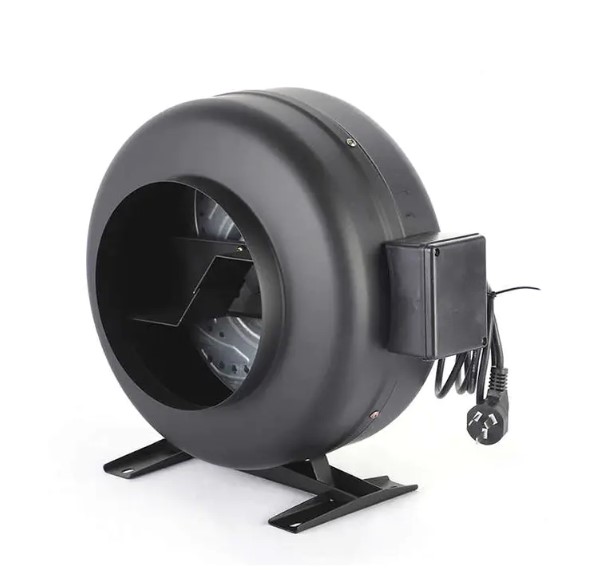Qinlang focuses on providing high-quality products and considerate services, and is committed to meeting every expectation of our customers.
The DKT-133 Cooling Ventilation Double Inlet Air Conditioning Fan is d...
See Details When planning a ventilation setup, ensuring smooth airflow and reliable performance is essential. An Inline Duct Fan can significantly enhance air circulation, maintain balanced indoor conditions, and reduce energy usage. Choosing the right unit, however, requires understanding the space, airflow behavior, noise considerations, energy efficiency, and maintenance requirements. The following guide outlines key factors to consider when selecting a suitable ventilation fan.
When planning a ventilation setup, ensuring smooth airflow and reliable performance is essential. An Inline Duct Fan can significantly enhance air circulation, maintain balanced indoor conditions, and reduce energy usage. Choosing the right unit, however, requires understanding the space, airflow behavior, noise considerations, energy efficiency, and maintenance requirements. The following guide outlines key factors to consider when selecting a suitable ventilation fan.
The space where the fan will operate directly affects performance.
Residential Areas: Compact rooms may benefit from quieter units with minimal vibration.
Commercial Spaces: Offices or shops often require devices that handle longer ducts and variable air resistance.
Industrial Zones: Factories or workshops may need robust units capable of enduring harsher conditions.
Environmental factors such as humidity, temperature variation, or dust can impact material durability and long-term efficiency. Evaluating these elements early prevents frequent maintenance and supports reliable operation.
Air movement within the duct network is crucial for performance.
| Duct Type | Recommendation | Reasoning |
|---|---|---|
| Straight ducts | Standard units | Allows smooth airflow and energy-efficient operation |
| Bends or branches | Units with adjustable dampers or regulators | Reduces turbulence and ensures balanced distribution |
| Complex networks | Fans with moderate pressure capacity | Maintains consistent circulation across outlets |
Understanding airflow behavior helps identify potential issues and allows for adjustments to ensure uniform air distribution.
Noise can affect comfort and productivity, especially in occupied spaces.
Choose a unit with stable housing and vibration-dampening mounts.
Use flexible connectors to isolate vibration from the duct.
Consider placement; units installed away from sensitive areas produce less audible disturbance.
These steps improve acoustic performance without compromising airflow.
Operational cost and sustainability depend on energy consumption.
Aerodynamic blades and smooth internal channels help maintain airflow with minimal power.
Selecting a fan that balances performance and energy use reduces waste and supports environmentally conscious operation.
Durability affects longevity and reduces maintenance needs.
| Component | Suggested Features | Benefit |
|---|---|---|
| Fan housing | Corrosion-resistant or coated materials | Protects against moisture and dust |
| Internal components | Lightweight metals or reinforced polymers | Easy installation and long-term stability |
| Blades and bearings | Durable and low-friction | Smoother operation and less wear over time |
Selecting materials suitable for environmental conditions ensures consistent performance.
Ease of maintenance helps maintain efficiency.
Look for units with removable panels for internal access.
Ensure that cleaning or inspection can be done without disassembly of the entire system.
Regular maintenance prevents dust accumulation, vibration increase, or airflow reduction.
Correct sizing ensures optimal airflow and energy efficiency.
Undersized units may fail to provide adequate circulation.
Oversized devices can waste energy.
Proper measurement of duct diameters and secure connections prevents turbulence or leakage.
Devices must tolerate heat and humidity conditions without performance loss.
| Factor | Suggestion | Purpose |
|---|---|---|
| Heat exposure | Select units with thermal-resistant housing | Prevents overheating or structural damage |
| High humidity | Moisture-resistant finishes | Avoids corrosion and prolongs service life |
| Electrical safety | Insulated wiring and safe installation | Reduces risk of faults or hazards |
The fan's location affects airflow efficiency.
Horizontal, vertical, or angled installation can change performance depending on duct layout.
Centrally positioned units often distribute air more evenly.
Verifying rotation direction ensures proper operation.
Balanced airflow maintains comfort across spaces.
Adjustable dampers or regulators help fine-tune distribution.
Monitoring and tuning airflow ensures consistent conditions across all zones.
Sensor or speed controls can adjust operation according to demand, saving energy.
Consider local conditions:
Coastal areas or high-dust environments may require corrosion-resistant finishes.
Chemical exposure necessitates reinforced housing or protective coatings.
Compact, lightweight units allow flexible integration into restricted spaces.
Total operating cost is more important than the initial purchase price.
Energy usage, maintenance, and expected lifespan should be factored in.
Choosing a unit that balances affordability with operational efficiency ensures long-term value.
Working with experienced suppliers provides guidance and ensures quality.
Trusted providers can help match the unit to your application.
Support services may include installation advice, troubleshooting, and maintenance tips.
By addressing these twelve key factors, users can select an Inline Duct Fan that delivers reliable airflow, reduces energy waste, and enhances comfort. Thoughtful planning supports efficient operation, long-term performance, and a better indoor environment.